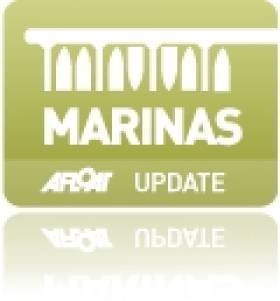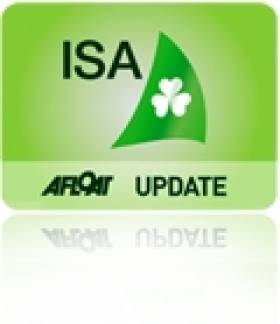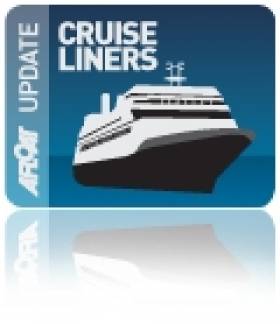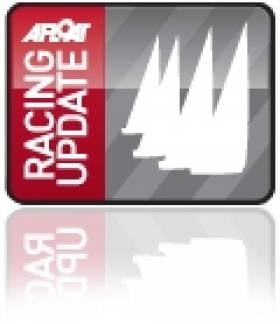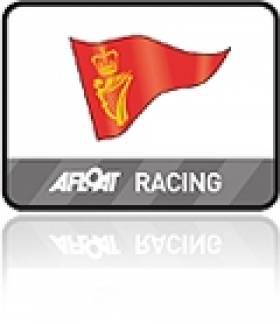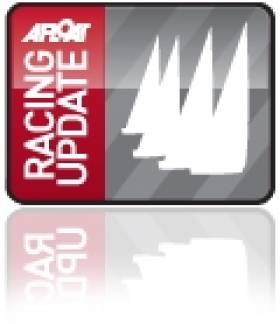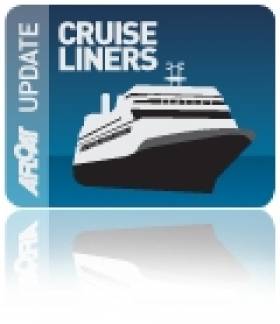Displaying items by tag: Cork
Paul Kingston
#RIP – Warm tributes have been paid to Cork Yacht Broker Paul Kingston (53), formerly of Kilmacsimon boatyard, who died unexpectedly at the weekend. A one time Irish Marine Federation (IMF) board member the news of his death has shocked both the local Cork boating community and his boating friends round the coast of Ireland. Paul ran a long established boat yard and brokerage business in the area first set-up in the 1970s by his father George.
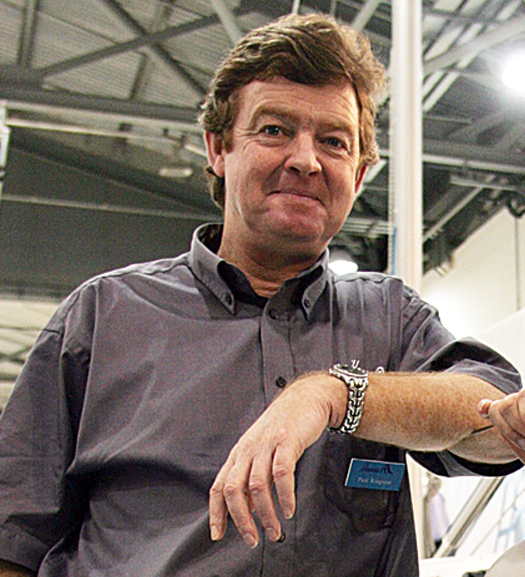
Yacht Broker Paul Kingston. Photo: David O'Brien
A member of Kinsale Yacht Club, Paul was a keen Dragon keelboat sailor and a motorcycle enthusiast. He was a big supporter of the Irish Boat Shows and a popular marine industry figure along the south coast.
Funeral details as follows:
Lying in repose at the Temple Hill Funeral Home, Boreenmanna Road of Jerh O'Connor Ltd from tomorrow, Thursday. Removal at 7pm (same evening) to the Church of Christ the King, Turners Cross, Cork. Requiem Mass on Friday at 11am. Funeral afterwards to St Catherine's Cemetery, Kilcully.
'Cork Harbour Marina' is Ireland's Newest Coastal Marina
Phase one of a planned 300-berth marina facility in Monkstown Co. Cork, aptly named 'Cork Harbour Marina', is Ireland's newest coastal marina and is offering all year round berthing facilities for pleasure craft.
The new addition to the seaside village is in a sheltered location on the western bank of the River Lee in an area very popular for boating activities.
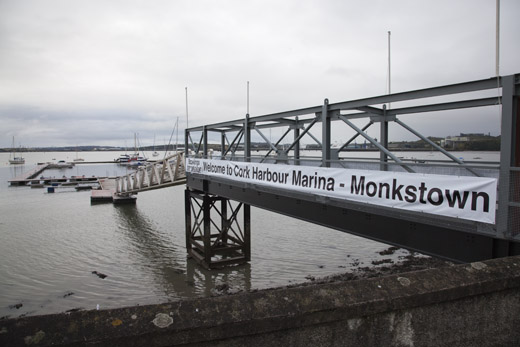
The new marina at Monkstown in Cork harbour
Accordng to the marina website a grant secured from SECAD (South East Area Development) assisted in the development of the marina and it is claimed the new facility will allow a wider range of people to get afloat in Cork Harbour, the second biggest natural harbour in the world.
Annual and long-term lets are now being taken.
Plans include promoting sailing in the area to older people, people with disabilities and for some less active men and women to get involved on the basis 'it is far easier and safer for such sailors to access their boats from a pontoon than a swinging mooring', the marina website says.
The new facility can accomodate boats up to 17m and consists of an outer perimeter of floating concrete break waters with fingered berths contained internally.
The 'Cork Harbour marina' web site is here.
Kenefick, Mansfield, Allen and Duncan Progress to All Ireland Finals
Racing is taking place in flight two this afternoon in gusty 12 knot winds under race officer Geoff O'Donoghue of Lough Derg Yacht Club.
All three Dun Laoghaire helms competing in this morning's first flight were eliminated. Missing the cut by a single point are Mermaid champion Roger Bannon, David Gorman of the Flying fifteens and Alan Claffey of the Ruffians. Also going home is Donegal GP14 Champion John McGuinness.
Flight 1 Results|
Flight |
Boat |
Name |
R1 |
R2 |
R3 |
Total |
|
1 |
7 |
George Kenefick |
1 |
1 |
2 |
4 |
|
1 |
1 |
Mark Mansfield |
2 |
2 |
1 |
5 |
|
1 |
2 |
Adrian Allen |
8 |
3 |
3 |
14 |
|
1 |
6 |
Ben Duncan |
4 |
6 |
4 |
14 |
|
1 |
5 |
Roger Bannon |
5 |
5 |
5 |
15 |
|
1 |
3 |
Alan Claffey |
6 |
4 |
6 |
16 |
|
1 |
8 |
David Gorman |
3 |
7 |
7 |
17 |
|
1 |
4 |
John McGuinness |
7 |
8 |
8 |
23 |
Govt Signs Off On €40m to Clean Up Haulbowline Waste Site
The Government has signed off on a €40 million package to begin clean-up of the toxic waste site on Haulbowline Island in Cork Harbour, the Cork Independent reports.
As previously reported on Afloat.ie, the site at the former Irish Steel/Ispat plant - which closed a decade ago - contains an estimated 500,000 tonnes of waste, including toxic heavy metals and cancer causing materials, and has been blamed for the area's notoriety in having one of the highest cancer rates in Ireland.
The move comes after an ultimatum from the European Commission earlier this year to act on cleanup of the island.
Mary O'Leary, chair of the Cork Harbour Alliance for a Safe Environment (CHASE) lobby group, is cautiously optimistic about the Caninet's move on the issue, but said "the proof of the pudding is in the eating".
She told the Cork Independent: “Obviously we welcome the announcement, we have been fighting for 15 years for this. It is a guarded optimism because we were promised something in 2008. We didn’t see anything then so we will see what happens here."
O'Leary has been invited to join the steering committee that will oversee the cleanup.
“It is in all our interests that a solution is found for the former Ispat site," said Minister for the Marine Simon Coveney, "and I am determined to ensure that there are no further delays in finding a solution."
The Cork Independent has more on the story HERE.
2011 Port of Cork Cruise Season Draws to a Close
With these high numbers of calls and increasing passenger numbers, the overall economic contribution of the cruise business in Ireland is estimated to be worth €60 million to the island of Ireland. Cork alone contributes an estimated €20m to the local economy both directly and indirectly. In a recent survey carried out by Red C Research on behalf of Cruise Ireland, the look of a port is seen to be a key feature, with those arriving into Cork port citing this as very important in encouraging passengers to disembark and take an excursion. Over 90% of passengers visiting Cork were satisfied with their experience which exceeded their expectations.
Captain Michael McCarthy, Commercial Manager Port of Cork commented on the cruise business saying: 'with so many passengers arriving into Cobh and Cork, the impact this has on the local economy is very positive with the average spend per in-transit passenger approximately €73 per day.'
Continuing Captain McCarthy talked about Cork's potential saying that: 'In 2012 the numbers of calls are already looking very positive with 58 liners expected. As it is the 100th anniversary of the Titanic, Cobh will play an important part in commemorations and already there are three liners booked to call, which are basing their cruise theme around the Titanic.'
Feedback from cruise companies visiting Cork is very positive. Direct access to the quayside for passengers coupled with the accessibility of trains to Cork and the historic town of Cobh and its attractions on their doorstep, makes Cobh an attractive port of call. In 2010 the Port of Cork were awarded 1st place for 'Best Destination Experience (Organised)' in the world and 2nd place for 'Best Port Welcome' at the Dream World Cruise awards. These awards along with Cork being voted within the Lonely Planet's top ten cities to visit must be capitalised.
The Port of Cork has ambitious plans to grow the business to 75 calls over the next five years and already 2012 are experiencing that growth, with 58 liners expected to call. Some of these calls will stay overnight and atleast six liners will make their maiden call to Cork in 2012. This growth is attributed to the Port of Cork's investment of over €8 million to date on berthing facilities, which are the only facilities in Ireland capable of handling the largest liners afloat today.
Eighth Place Overall for O'Leary at New York Invitational Cup
Anthony O'Leary ended up in the same position as he started the New York Yacht Club Invitational Cup after yesterday's final rounds. The Royal Cork crew counted a 15 in the final race to end up eighth, the same as Monday's opening score. The sole Irish invitees were as high as sixth last Thursday.
In a reversal of fortunes from the inaugural event two years ago, the Terry McLaughlin-led team from the Royal Canadian Yacht Club persevered today to win the 2011 New York Yacht Club Invitational Cup presented by Rolex, sailed in Swan 42s. The New York Yacht Club team finished second, with the Annapolis Yacht Club team, third. The final race days' light and shifty conditions gave all 22 teams the opportunity to shift positions on the leaderboard, but in the end most just solidified what they had already earned.
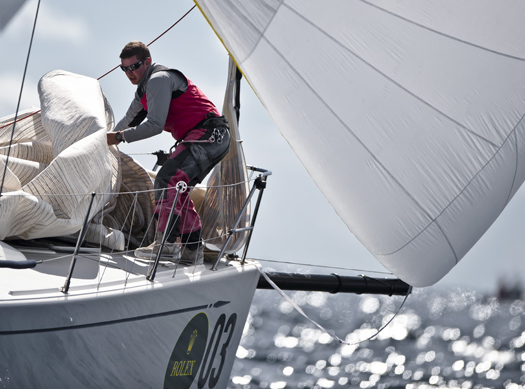
Royal Cork's entry finished eighth in New York. Photo: Kurt Arrigo/Rolex
The Canadian entry, skippered by Olympic medalist and former America's Cup skipper, Terry McLaughlin, went into the day – and the final race – with a ten-point lead over the New York Yacht Club entry. But the Canadians took charge from the start, McLaughlin recounted their strategy, "We decided to go after New York, but it was tricky. It was five knots at the start, but it was very, very shifty and puffy, so if we let them sail their own race and we had tried to sail our own race. There is a reasonable chance that they would have put ten boats between us, so we decided that 'ok listen' we've got to be near them. If we put them back at the start and we're back at the start than it doesn't matter and we couldn't lose.
"But, we still both had reasonable starts at the right end and we went right a little bit. Then they (NYYC) sort of got to us a bit, so I bailed left, but we happened to be in a great puff and gained on them a lot."
The Royal Canadian Yacht Club team, from Toronto, sailed a nearly flawless series with seven top five finishes – out of eleven races sailed. In races where the Canadians were deep in the fleet, McLaughlin, tactician John Togerson and crew inevitably overhauled the boats ahead. McLaughin said, "I think we came back quite well this series. Obviously yesterday was our best, going from nineteenth to sixth. Its important because you can't get off the line in great shape or get around the first mark in great shape, eleven races in a row."
The 55-year old sailor won a silver medal in the Flying Dutchman class in the 1984 Los Angeles Olympics and was the skipper of Canada I in the 1983 America's Cup challenger series. In fact, three of his current crew were holdovers from that Cup campaign. These days his business is importing clothing and footwear from Ireland, and his sailing more relegated to only occasional racing.
In a new addition to the event, the team leading in points at the end of each day flew a "gold" spinnaker in the following day's races. The Royal Canadian team quickly took that honor after the first day and never relinquished it for the week.
McLaughlin was quick to praise his crew, "It was a team effort. I mean, I make the final decisions, but I'm relying on guys that A) make the boat go fast and B) tell me what's going on."
Ken Colburn was skipper of the New York Yacht Club team, the only really viable threat to the Royal Canadian Yacht Club through the five days of racing, coming within five points midweek. Colburn was pleased, "You have to step back from this and say 'we came in second in this regatta to a team that was just doing everything well.' You've got to walk away from that pleased, with just slight disappointment that you didn't get all the way there. The Royal Canadian Yacht Club are the ultimate winner, and they deserve it."
Like many of the teams that only managed to get everyone in the same boat relatively late, the NYYC crew started sailing together for the first time over Labor Day weekend but, according to their skipper, they quickly gelled. Colburn from Marblehead, Massachusetts, was adamant that his crew was equally responsible for their success, "This is a team sport and I'm only driving the boat most of the time. I need tacticians and trimmers and strategists and bow people to do their jobs well, and they all did them superbly well. They were sportsmanlike, cordial, competitive, and always working to win, I couldn't be more proud of this team."
Peter McChesney, skipper of the Annapolis Yacht Club team which finished third, summed up what many competitors agreed, "It was certainly, arguably, the most unique, special, exciting regatta. The professional circuits, and Olympic campaigns, and lot of great one-design classes, but certainly this is a new unbelievable regatta with worldwide excitement."
While the North American teams dominated the top five overall positions, with Eastern Yacht Club, and Newport Harbor Yacht Club in fourth and fifth, the first international entry was the sixth-placed Japan Sailing Federation, skippered by Makoto Uematsu, followed by the Royal Ocean Racing Club (GBR), Royal Cork Yacht Club (IRL), Royal Hong Kong Yacht Club, and Yacht Club Argentino (ARG), rounding out the top ten finishers.
Following the success of the inaugural event in 2009, Event Chairman John Mendez and his Invitational Cup committee set to make several changes to improve the competition. Among these were changing to an all-amateur event, and on-the-water umpiring, both of which were unanimously well received by the competitors. Peter Shrubb, Chief Umpire from Bermuda, oversaw the ten-umpire team. Shrubb was pleased with the results explaining, "We're on the water and adjudicating any rule infractions. We can't catch everything, but we'd like to think we caught 95%. We resolve them on the water, and it saves the competitors having to file protests against each other – it take out of their hands, puts it into our hands and makes for a friendlier, more Corinthian event."
The final Rolex Awards Dinner was held under the marquee on the New York Yacht Club's Harbour Court grounds. Competitors and guests enjoyed dinner and dancing overlooking Newport Harbor.
The Royal Canadian Yacht Club team, overall winner of the Invitational Cup were awarded a Rolex Submariner timepiece and presented the Invitational Cup trophy, which was commissioned by NYYC Commodore Robert James and past NYYC Trustee, Charlie Robertson.
NYYC's Harbour Court hosted 22 yacht clubs – representing 16 nations from six different continents – for the second edition of this biennial event. Racing was conducted in NYYC Swan 42s on Rhode Island Sound and Narragansett Bay from September 10-17, 2011. The next edition of the New York Yacht Club Invitational Cup presented by Rolex will be held in September 2013.
Final Results – 2011 New York Yacht Club Invitational Cup
1) Royal Canadian Yacht Club, Canada, 47 points
2) New York Yacht Club, USA, 67 points
3) Annapolis Yacht Club, USA, 72 points
4) Eastern Yacht Club, USA, 89 points
5) Newport Harbor Yacht Club, USA, 105 points
6) Japan Sailing Federation, Japan, 105 points
7) Royal Ocean Racing Club, Great Britain, 112 points
8) Royal Cork Yacht Club, Ireland, 115 points
9) Royal Hong Kong Yacht Club, Hong Kong, 120 points
10) Yacht Club Argentino, Argentina, 121 points
11) Royal Yacht Squadron, Great Britain, 122 points
12) Nyländska Jaktklubben, Finland, 127 points
13) Cruising Yacht Club of Australia, Australia, 133 points
14) Clube Naval de Cascais, Portugal, 137 points
15) Norddeutscher Regatta Verein, Germany, 138 points
16) Royal Bermuda Yacht Club, Bermuda, 144 points
17) Royal Cape Yacht Club, South Africa, 148 points
18) Itchenor Sailing Club, Great Britain, 150 points
19) Royal Norwegian Yacht Club, Norway, 154 points
20) Yacht Club Capri, Italy, 167 points
21) Real Club Nautico de Barcelona, Spain, 197 points
22) Yacht Club Punta Ala, Italy, 220 points
Cork Week 2012 Chairman Appointed
Royal Cork Yacht Club has announced Pat Lyons will chair the club's biggest sailing regatta next season. Cork Week 2012 at Crosshaven is scheduled to run from the 7th - Friday 13th July 2012 following a decison to move the date back a week to avoid a clash with the Solent's Round the Island Race. Lyons has served on Royal Cork's Club Executive for the last 4 years.
Kenefick to Skipper Cork Entry at Student Yachting World Cup
Twenty three year old George, who will graduate with an Honours Degree this coming November, is now training hard with fellow crewmembers, including Joe Bruen and Kevin Goulding. Joe competed successfully in the 1720 Europeans this year and with George, sailed "Tiger" to success at the IRC Nationals in Class 3.
CIT have enjoyed success previously at the Student Yachting World Championships in La-Trinite-sur Mer, France in 2008. It will be George's fourth time competing, having represented CIT for each of his undergraduate years.
Royal Cork Crew Moves up to Sixth at New York Yacht Club Invitational
Ireland's Royal Cork Yacht Club moved up two places overall in the Rolex New York Invitational Cup yesterday after scoring 3,10 and 11 in the 22 boat fleet yesterday. The Anthony O'Leary skppered boat is just three points behind Japan who ties for fourth place after six races with the Newport harbour team on 48 points. Third place is Annapolis Yacht Club on 43 points.
Returning to upper Narragansett Bay for the second day of the fixture has proven beneficial for at least one of the 22 yacht club teams – Royal Canadian Yacht Club – which again displayed remarkable consistency on the race course. And in a repeat of yesterday's prevailing theme of tight competition, today's three races were won by three different clubs which means that there have been no duplicate winners thus far in the six-race series.

A keen start yesterday. Royal Cork is bow number three. Photo:Dan Nerney/Rolex
"We were probably the biggest movers," said Peter McChesney, helm for the Annapolis Yacht Club team who has only sailed in Newport a handful of times previously, including the the New York Yacht Club Invitational Cup U.S. Qualifying Series in 2010 in which the AYC team finished second to earn the opportunity to race in this event. AYC was 10th overall after yesterday's first day of racing, and moved up to third overall with 43 points after finishes of 6-1-3 today. "We just got off the line better today in every race, and gave our tactician [John Torgerson] the opportunity to make good decisions. If you get a good start it's easier to make those decisions. Our tactician took what we gave him and did a great job of calling tactics, and the crew work was essentially flawless. Everything just went our way."
The exciting conditions seen today on Narragansett Bay have also proven why Newport remains such a unique place to sail. "Where else can you sail in 20 knots of breeze and have the seas be this flat?," said Chip Whipple, timmer on the New York Yacht Club team. "It really is an anomaly. When you have as much breeze as this [in the Med] you're sailing in big seas and a lot of swell. And in northern Europe you have the cold water and big seas, breaking waves. Being as protected as we are here it's just an extremely fantastic place to sail, and the boats can't sail any faster because they are absolutely optimized for the conditions."
The Royal Canadian Yacht Club (RCYC) team has retained the overall lead position after adding finishes of 2-4-2 to yesterday's finishes of 2-1-4 for 15 points. When they won the second race on the first day of the contest, they were given the Rolex gold spinnaker to fly in the subsequent race. And, as overall standings leader, RCYC carried the golden chute for all of today's races, and will continue that way when racing resumes tomorrow.
"We had to bail on two starts," said RCYC helm Terry McLaughlin after racing today, explaining that the RCYC team was forced to tack in both instances but the moves wound up working in their favor. "It was good breeze most of the day and we were going well. We're trying to do all the fundamentals well and not make mistakes." With eleven races planned, and tough competition, McLaughlin knows all to well that the 13-point lead RCYC currently enjoys can disappear in a hurry. "We had a good battle with NYYC in the last race, caught up to them on the last leg. It was close, but they beat us by three boat lengths."
"The last race was a lot of fun," said Ken Colburn, skipper of the New York Yacht Club team when summing up their win of the final race of the day. NYYC now stands second overall with 28 points, 13 points behind RCYC. "We had a great start, found ourselves in a clean lane and just were able to get in the proper groove. RCYC was there every inch of the race. We stayed together . . . gapped the fleet . . . for both of us it was just a fabulous race." Emphasizing that there was still a lot of racing to come, Colburn noted that, as anticipated, the quality and depth of the competition is remarkable. "Six winners in six races is indicative of how strong this fleet is overall."
Racing resumes today Thursday, September 15, with the warning signal for the first race scheduled for 1100. Competitors leave NYYC's Harbour Court for the race course at approximately 0930 each morning. The winner of the 2011 New York Yacht Club Invitational Cup presented by Rolex will be confirmed at the conclusion of racing on Saturday, September 17.
MV Queen Elizabeth Makes Maiden Call to the Port of Cork
The luxurious ocean liner, MV Queen Elizabeth will make her maiden call to Cobh tomorrow morning arriving at 9am and bringing with her over 3,000 passengers and crew. With a gross tonnage of 90,900 GRT and a guest capacity of 2,068 and 996 crew, MV Queen Elizabeth is the newest Cunarder to join the fleet.
To coincide with her maiden call, the Port of Cork together with Cunard will hold a Lusitania Memorial Service in the centre of Cobh town. Led by Captain Christopher Wells, this service will be attended by the Chairman of the Port of Cork, Port of Cork Directors, Mayor of the Town of Cobh, the County Mayor and the Lord Mayor. A number of other key figures have also been invited.
Cunard have a great history of calling to the Port of Cork and over the years all of Cunard’s liners have made a visit to Cobh. This year is the first year to welcome all three queens; Queen Mary II, Queen Victoria and Queen Elizabeth to Cobh. In 2009, MV Queen Elizabeth II made her final call to Cobh before departing for Dubai where she was to become a floating hotel.
The following will be read at the Lusitania Memorial Service, by Captain Michael McCarthy Port of Cork;
The sinking of the Lusitania on 7th May 1915 was a human catastrophe on a scale that this small town had not experienced before or since.
When the Lusitania left New York there were 1,962 people on board, 694 crew,1,265 passengers and 3 stowaways. Only 764 people survived – 474 passengers and 290 crew. Over 800 of the victim’s bodies were never found. The bodies landed in Cobh were buried in 3 mass graves in the “Old Church Cemetary”.
The People in Queenstown, Cobh, witnessed the trauma, tragedy and heartbreak that ensued. The dead, the injured and the bereaved were brought among a community here that mobilised itself and responded with courage and compassion to their needs. One of the survivors, Charles Lauriat, later referred in his book “The Lusitania’s Last Voyage” to the streets filled with people ready to do anything in their power to relieve our sufferings. He said he had never seen anything more spontaneous or genuine or more freely given than the Irish hospitality of Queenstown.
This memorial reflects the eternal connection between Cobh, the” Lusitania” and Cunard, and is a stark reminder of the tragedy of war.
It is fitting that today Captain Christopher Wells of Cunard’s vessel “Queen Elizabeth” should be here together with the Mayor and people of Cobh to reflect on the great loss and the human tragedy of the “Lusitania”.
Queen Elizabeth: 73 years ago, Cunard’s first “Queen Elizabeth” entered service. The launching of that ship was described as “the inception of a great human enterprise, an act of faith”. Could they have imagined the design and capability of the current vessel berthed at the Cobh Cruise Berth?
In October 2008, Cunard announced the building of this magnificent vessel at an estimated cost of €500 million euros, and within 2 years the naming ceremony was carried out in Southampton by Her Majesty Queen Elizabeth 11,. The vessel departed on her Maiden voyage under the command of Captain Chris Wells on the 12th October 2010 .She has already completed a World voyage, transited the Suez and Panama Canals and crossed the World’s Oceans.
Captain Wells has already served a long and distinguished career in the Merchant Navy and following many years in command, was in 2008 appointed Master of the Queen Mary 2, the same year the QE2 was retired from the Cunard Fleet. He was subsequently appointed the first Master of the Queen Elizabeth in 2009





























